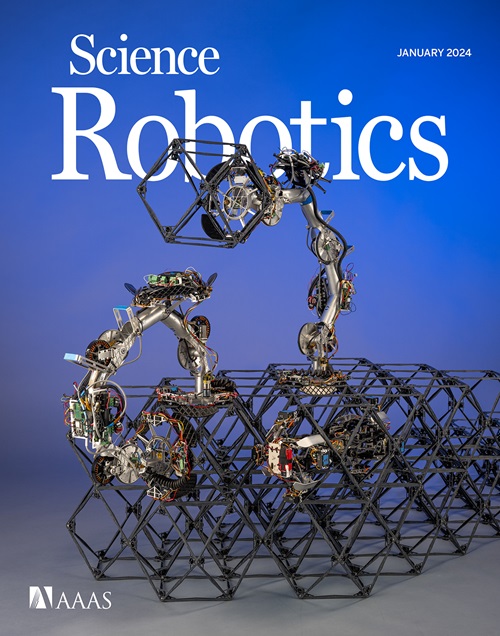Preventing pressure ulcers by increasing pressure: An unorthodox alternating-pressure mattress
IF 27.5
1区 计算机科学
Q1 ROBOTICS
引用次数: 0
Abstract
Despite the devastating effects of pressure ulcers (PUs), little is understood about how they can be prevented using alternating-pressure (AP) mattresses. Such mattresses typically aim to minimize the pressures imparted while alternating between different states of pressure to prevent areas of tissue from being persistently occluded of blood flow. In this work, we built an actuator bed to study AP approaches and learned that AP mattresses should aim to increase—not decrease—peak pressures to a certain extent if such areas are to be minimized for effectively preventing PUs. In addition, we learned that such mattresses should aim to increase the difference between their loading and off-loading pressures. We identified optimal parameters from the study and used them to design an AP mattress made of compliant mechanisms that markedly reduce areas of persistent occlusion by exhibiting relatively high peak pressures that are periodically alternated with substantially lower off-loading pressures. The mattress’s performance was characterized and compared against a standard foam pad in its flat and raised configurations. The load required to actuate the mattress from one of its stable states of pressure to the other was also measured.

通过增加压力来预防压力性溃疡:一种非传统的交替压力床垫
尽管压疮(PUs)具有毁灭性的影响,但人们对如何使用交替压力(AP)床垫来预防压疮知之甚少。这种床垫的典型目的是尽量减少施加的压力,同时在不同的压力状态之间交替,以防止组织区域持续阻塞血液流动。在这项工作中,我们建立了一个执行器床来研究AP方法,并了解到如果要最小化这些区域以有效防止pu, AP床垫的目标应该是在一定程度上增加而不是减少峰值压力。此外,我们了解到这种床垫应该旨在增加其加载和卸载压力之间的差异。我们从研究中确定了最佳参数,并使用它们设计了一种由柔性机构制成的AP床垫,通过表现出相对较高的峰值压力,周期性地与较低的卸载压力交替,显著减少了持续闭塞的区域。床垫的性能特点,并与标准泡沫垫在其平和凸起的配置进行比较。还测量了将床垫从一种稳定压力状态驱动到另一种稳定压力状态所需的负载。
本文章由计算机程序翻译,如有差异,请以英文原文为准。
求助全文
约1分钟内获得全文
求助全文
来源期刊

Science Robotics
Mathematics-Control and Optimization
CiteScore
30.60
自引率
2.80%
发文量
83
期刊介绍:
Science Robotics publishes original, peer-reviewed, science- or engineering-based research articles that advance the field of robotics. The journal also features editor-commissioned Reviews. An international team of academic editors holds Science Robotics articles to the same high-quality standard that is the hallmark of the Science family of journals.
Sub-topics include: actuators, advanced materials, artificial Intelligence, autonomous vehicles, bio-inspired design, exoskeletons, fabrication, field robotics, human-robot interaction, humanoids, industrial robotics, kinematics, machine learning, material science, medical technology, motion planning and control, micro- and nano-robotics, multi-robot control, sensors, service robotics, social and ethical issues, soft robotics, and space, planetary and undersea exploration.
 求助内容:
求助内容: 应助结果提醒方式:
应助结果提醒方式:


